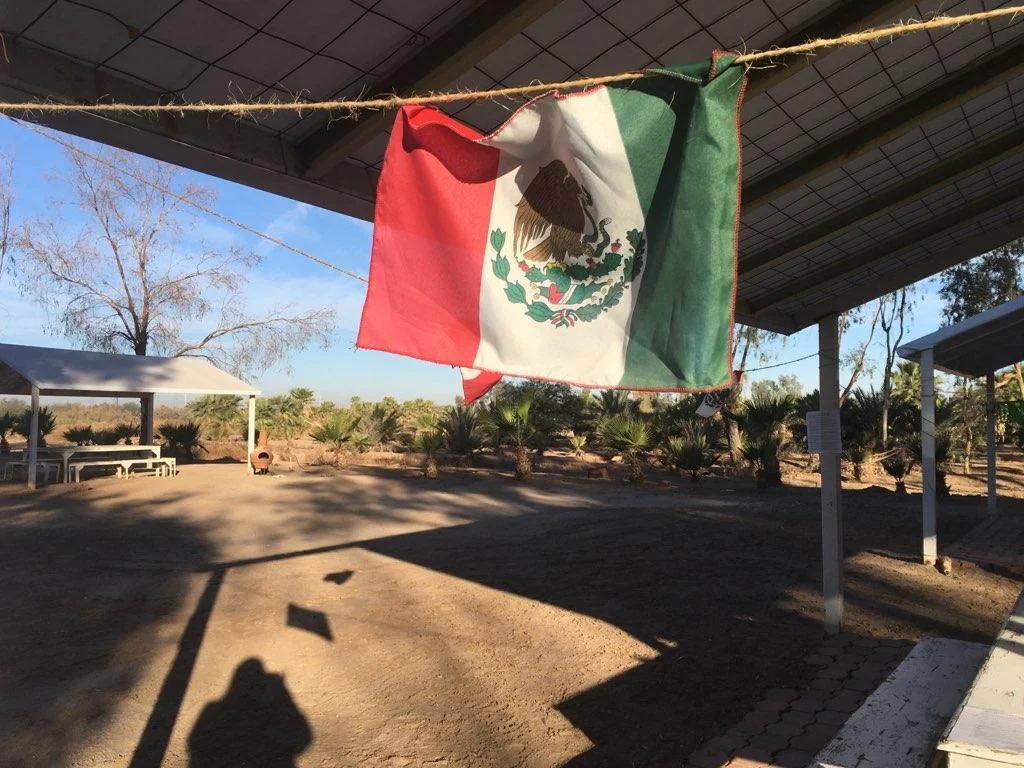In terms of imagination building power, this was the first and only action I’ve done where the police arrived on scene, saw what was happening, and then left. The whole scene was incredibly haunting. Everybody, and I mean everybody, stopped what they were doing and fell silent. And I believe it was in part because people were imagining themselves, their kids, their family, in the cage.
Read MoreLearning a new language means rediscovering how your mouth and your voice work together. Earlier that year, I felt cut off from both. I had always considered myself an activist and a writer. But I noticed a shift. I had stopped writing, and focused solely on activism work. I was leading campaigns against corporations and corrupt politicians – and some of them were even working – but I was burning out.
Read More“When you’re trying to do organising work, if you don’t address those underlying narratives and work to both shift them – shift away towards more liberation – but also to create alternative narratives that are really about liberation, then it’s going to be really difficult to do that work. That’s really why we got started.“
Read MoreThe dominant narratives are asking the wrong questions. Our analysis and our solutions will depend on the questions we ask ourselves. Why are there more than 10,000 people leaving their homes, their families? Why are they going to the US? It is a complex situation and there are no easy answers, no easy solutions.
Read MoreWith this list, our goal is to build the capacity of change agents, ourselves included, for understanding what memes travel far and wide with the most impact. If we know our work is to #changethestory, how do we deploy increasingly-effective memes that shape politics and culture towards the justice we all so desperately need?
Read More“Voting”, as meme then, is a capsule that holds a ton of underlying assumptions. The story of voting contains ideas about what valid and full participation look like and what exactly constitutes democracy.
Read MoreThe reality of the Borderlands set in on our first walk around town. Cristóbal (CSS Trainer based in Nogales) and Marla from KBI took us to the memorial site of Jose Antonio, a Mexican teen who was murdered by the Border Patrol from the U.S. side of the fence, while he played with his friends on a Mexican street corner.
Read MoreIt's an annual Center for Story-based Strategy tradition to create a list of the Top Social Justice Memes for the year!
Read MoreDeep in my knowing is a core truth: that love is not something to mistrust, that we must fight for each other instead of competing against each other. To my fellow imagineers, story-nerds, and powerful community, please join me in welcoming Shana back to CSS!
Read MoreI was asked to put together a short 3-minute animated video to introduce story-based strategy. Originally it was going to be one of those graphic note-taking type videos. Through the process of making the video the concept and design of the project changed dramatically and the final result was a stop motion animation short film. This project is a bit meta, we are using story-based strategy to explain what is story-based strategy and then within the animation itself, the storyline is that of a community using story-based strategy to win.
Read MoreHow is the network of CSS learning? I also wonder how might it learn (harder) better, faster (stronger). And all of that is within the broader context of CSS’ mission: to build power through imagination and create shared narratives that support the movement of movements to ensure a Just Transition.
Read More“It has been a long and fulfilling journey. I’m ready to pass the marker and rejoin the circle…” — Christine Cordero, Outgoing Executive Director
“Story-based strategy has profoundly shaped who I am. I’m ready to pick up the marker and lead.” — Bernice Julie Shaw, CSS Co-Director
Read MoreI am working with CSS on developing a training practice for the newly re-implemented regional trainings. CSS is bringing back the 1-day regional trainings to bring together organizers and communicators to learn the basics of story-based strategy.
Read More"I would describe story-based strategy as a crash course on fully understanding the power narratives have on our society. I believe it can be one of the most useful tools in any organization's Communications and Digital department arsenals."
Read More“I found myself tracking what was being foreshadowed by the art, asking what the underlying assumptions were surrounding Black Panther as a superhero and looking to really pin down what the central conflict was in the art piece. These tools helped me assess the narrative potency of the work I was creating. “
Read MoreI’m a Black, queer communications strategist, facilitator, systems thinker, and teacher/coach. I hate it but the term “Renaissance [person]” seems to fit well. Who I am and what you know me to do totally depends on when we met 😅.
Read MoreStory-based strategy is a way of understanding that the work to fight injustice & advance movements for change also includes changing the narratives that we hear and tell in a way that allows us to be clear about where harm is coming from, who has the solutions and leadership, and re-imagine what might be possible for our lives, communities, and world.
Read More

















